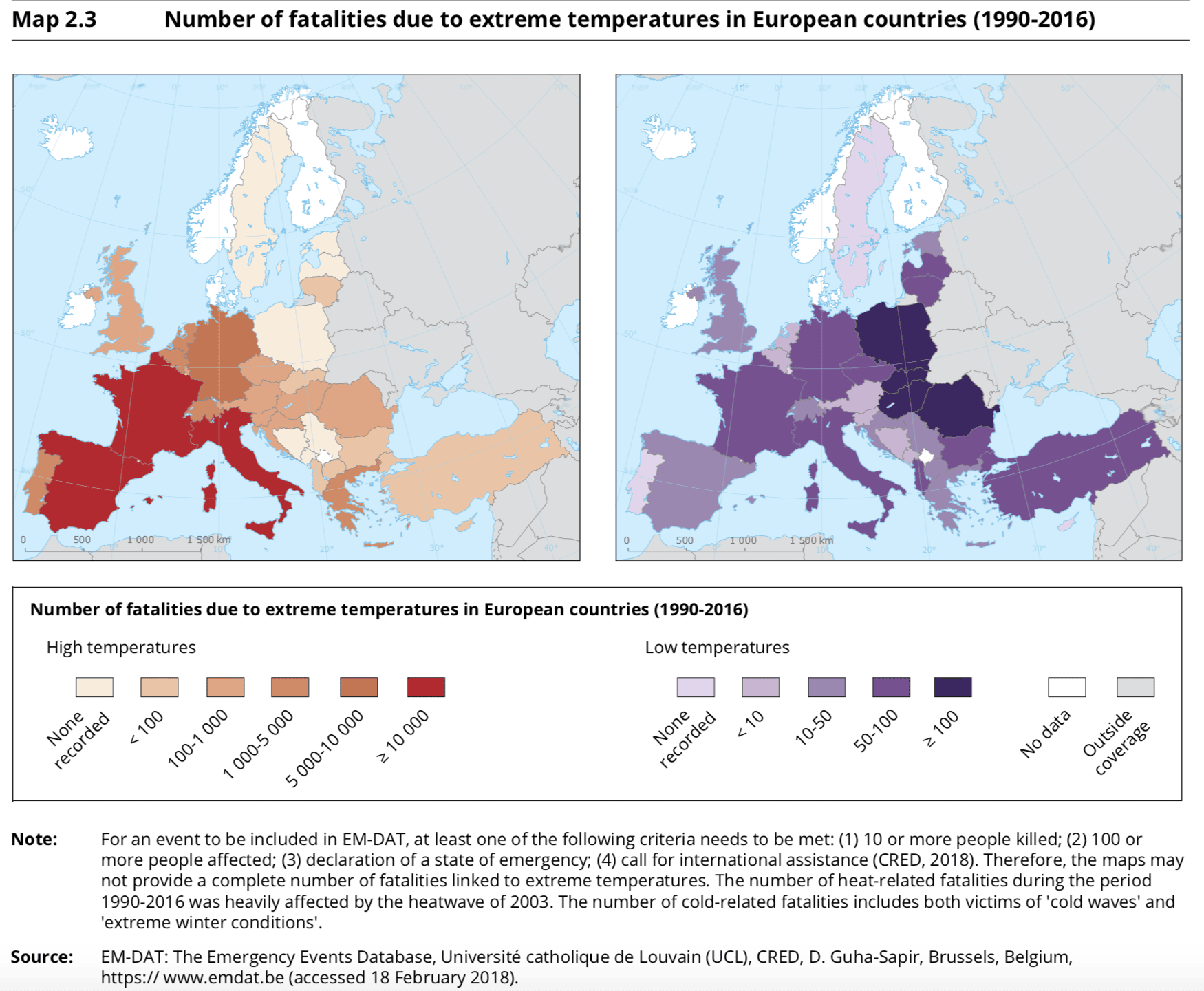
Unequal exposure and unequal impacts: social vulnerability to environmental health hazards in Europe
Source: EEA press release
The EEA report “Unequal exposure and unequal impacts: social vulnerability to air pollution, noise and extreme temperatures in Europe“ draws attention to the close links between social and environmental problems across Europe. The distribution of these environmental threats and the impacts they have on human health closely mirror differences in income, unemployment and education levels across Europe.
While EU policy and legislation over past decades have led to significant improvements in living conditions, both economically and in terms of environmental quality, regional inequalities persist. The report stresses that better alignment of social and environment policies and improved local action are needed to successfully tackle environmental justice issues.
“Despite the very significant success of European policies over the years to improve our quality of life and protect the environment, we know more can be done across the EU to make sure all Europeans, no matter their age, income or education, are well protected from the environmental hazards we face,” said Hans Bruyninckx, EEA Executive Director.
CMCC researcher Margaretha Breil (ECIP Division) contributed to the report in the framework of the ETC/CCA activities. More in detail, she coordinated the ETC/CCA contribution on the issue of social vulnerability on climate change, realizing in particular a literary review of the impacts of extreme temperatures and heat waves on European citizens.
“The report”, researcher Margaretha Breil explains, “aimed at assessing inequalities in the exposure to and impacts of selected environmental health hazards (air pollution, noise, and extreme temperatures) on European society.”
The outcomes of the report highlight how exposure to air pollution, noise and extreme temperatures does not affect everyone in the same way. On the contrary, the uneven distribution of the impacts of air pollution, noise and extreme temperatures on the health of Europeans closely reflects the socio-demographic differences within our society. “People’s socio-economic status (i.e. income, employment status or level of education) and personal characteristics such as age or health,“ Breil explains, “determine how vulnerable people are to these environmental health hazards, i.e. how badly their health may be affected if they are exposed to them. Older people, children, those experiencing material disadvantage and those in bad health are typically more sensitive to air pollution, noise and extreme temperatures than the general population, while those experiencing material disadvantage are less able to avoid, or cope with, these environmental health hazards. In many cities, poorer communities living in the most densely built-up city areas, are exposed to higher temperatures as a result of the urban heat island effect”.
The EEA report tried to answer to this question: where do overlappings between lower socio-economic conditions and more frequent and intense environmental health hazards occur?
“Extreme temperatures and ozone pollution tend to affect the south of Europe and the Mediterranean, a hotspot of climate change, more than other European regions.
Low incomes may affect the ability of the population to afford keeping homes adequately cool or warm and aging populations will be increasingly sensitive to high temperatures. Consequently, in many regions, the population’s high social vulnerability overlaps with high levels of environmental health hazards, resulting in negative health outcomes”, Dr. Breil concluded.
More information on key findings and proposed solutions here.
The report is underpinned by additional publications providing supplementary information (see the report for the complete list); among them, the ETC/CCA report “Social vulnerability to climate change in European cities – state of play in policy and practice”, which discusses the notion of social vulnerability to climate change to explore what is currently happening on the ground to address this issue across Europe.
For more information, read and download the full report “EEA Report No 22/2018 – Unequal exposure and unequal impacts: social vulnerability to air pollution, noise and extreme temperatures in Europe”.




